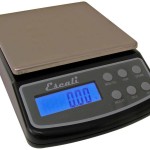LOSING WEIGHT SERIES: PART ONE
Losing Weight: Behind the Numbers
Playing The Numbers Game: This starts off my Losing Weight series, because let’s face it: we have to start somewhere, so why not where the most impact can be made early on. Although the task of losing weight does not start and finish with calorie counting and scale watching, let’s not make the mistake of throwing the baby out with the bath-water and assume that changing a laundry list of other things and refusing to look at the scale will get us moving on the correct path.
PITFALLS: I used to make a similar mistake in the past when working with clients. “Don’t look at the scale this week, you’ll be fine,” I said. But then, when they finally did, they were either pleasantly surprised, or horrifyingly mortified by the outcome. So it was a 50-50 crapshoot if they’d stay motivated to keep churning. The reality of the situation became very clear to me over time. Most people are in denial about losing weight. They either think they only need to shed a few pounds, or they assume that cheating here and there doesn’t have a big effect on their ability to lose weight. Some even go as far as thinking that if they follow the same prescription as the next person that their results will be the same. That could not be any further from the truth.
Exercise prescription is paramount when it comes to attaining the results you deserve. There is no way you’ll lose the same weight as me, by following my lead. It takes time, effort and consistency. But we’ll tackle that later in this series. Today, we’ll focus on nominal data.
Losing weight is foundationally a numbers game. THE HARD TRUTHS: Calories in versus calories out. Ok, here is the science behind it all. Relatively speaking, it takes about 3500 calories to burn off one pound. Most likely, it takes about the same to create a pound. So if you think of it this way; staving yourself for a day – 0 calories in – and burning 3500 will make you lose a pound a day. Yeah, right? Wrong. Your body needs calories to live and function at a base level. Brain, lungs, heart, digestion, and rest, all need calories for energy. This is your resting basal metabolic rate- the baseline for human functioning. Normal dietary recommendation for a sedentary person (doesn’t work out at all) is that you consume anywhere between 1600-1800 calories a day. The athlete may need well beyond that based on the type of workout regimen. THE SCALE IS YOUR FRIEND: Don’t shoot me, I’m just the messenger. But you need to get acquainted with the scale. How else will you ever measure success? I knew a lady who started a “lifestyle” change where she was managing her eating and exercise a lot more stringently, but refused to get on a scale for fear of being discouraged. The problem is; she never knew where she stood, no pun intended.
SOLUTIONS: First – Get on the scale and face the truth. Second – Understand the math. You need calories, but probably not as much as you ingest and you need to burn more per day than you’re probably do. So, here’s a cheat sheet for you below:
Daily Intake (1600-1800); Daily Expenditure (exercise – 1000/daily activity – 1500) = 1.8-2.0 pounds per week. That equals out to 7-8 pounds a month. This is not a bad average at all, but is based on exercise 7 days a week.
OBSTACLES: You! Do the math and understand what is going on inside your body. The type of exercises you perform, along with the right exercise prescription (perfect match between cardio and strength training) will get you where you need to be. And be realistic. Rome wasn’t built in a day and neither was your body. And you didn’t put all the weight on in a day either – contrary to your belief. Pace yourself and set small, attainable goals. You’ll get there in time and you’ll do it the right way.
Come back soon for the part 2 of the series that will touch on these things. Take care.
Categories
Archives
- October 2018
- September 2018
- May 2016
- March 2016
- February 2016
- December 2015
- November 2015
- October 2015
- September 2015
- August 2015
- July 2015
- June 2015
- May 2015
- April 2015
- March 2015
- February 2015
- January 2015
- November 2014
- October 2014
- April 2014
- March 2014
- February 2014
- January 2014
- December 2013
- November 2013
- October 2013
- September 2013
- August 2013
- July 2013
- June 2013
- May 2013
- March 2013
- February 2013
- January 2013
- December 2012
- November 2012
- October 2012
- August 2012
- July 2012
- November 2011

